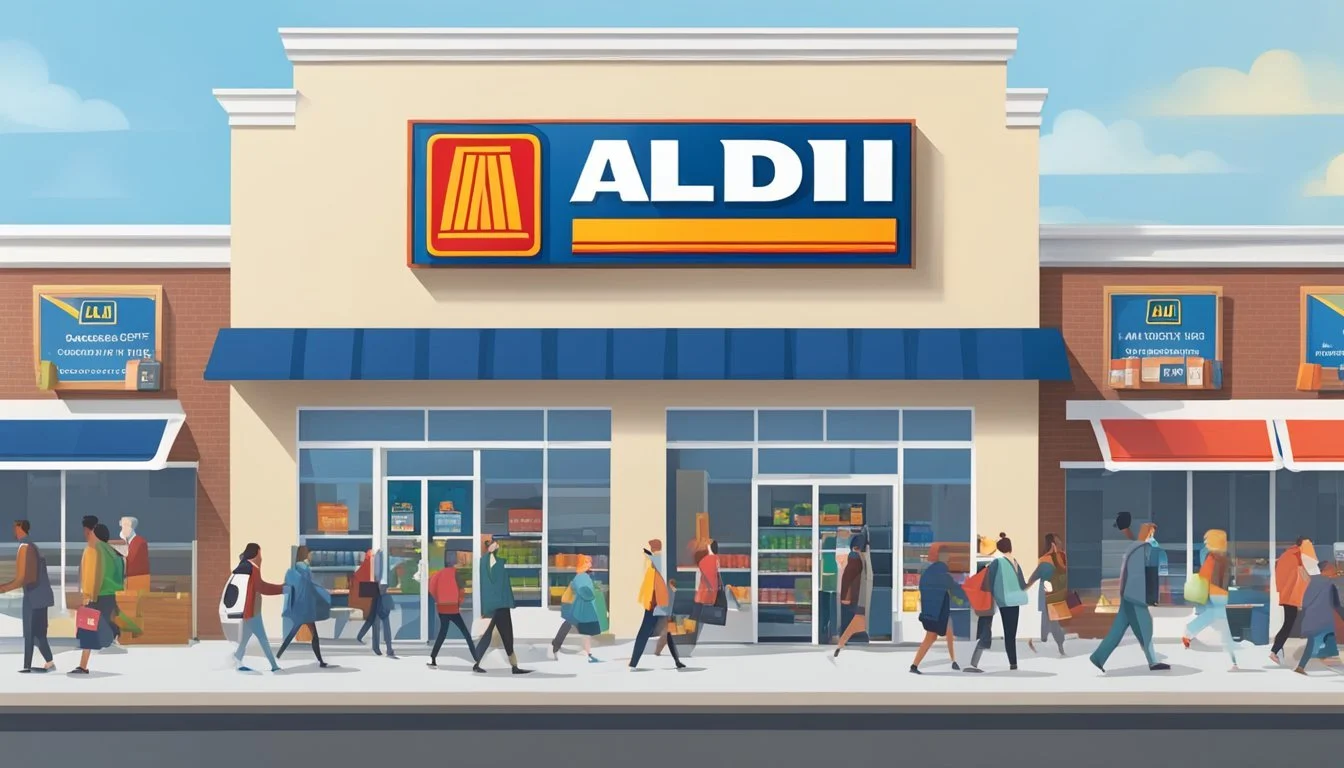Aldi vs ShopRite
Comparing Prices, Quality, and Convenience
When considering the question of which grocery store is better, Aldi or ShopRite, shoppers are typically weighing factors like price, quality, and selection. Aldi, known for its cost-efficiency, offers up to 50% savings on grocery bills compared to some competitors. With a streamlined business model that emphasizes generic brands and a compact store layout, Aldi passes on savings to customers, making it a go-to for budget-conscious shoppers.
ShopRite, on the other hand, takes pride in providing a wider selection of items including a variety of national brands and a more diverse array of fresh produce and meats. Their stores often feature in-house butchers and a robust produce department, catering to consumers who prioritize quality and variety in their grocery shopping experience. While typically priced higher than Aldi, ShopRite's focus on customer service and an extensive range of goods makes it a strong contender in the supermarket sector.
Between Aldi's focus on affordability and ShopRite's commitment to variety and quality, the better grocery store depends on individual customer priorities. Both stores have carved out distinctive niches in the market, ensuring a loyal customer base that values what each has to offer. Whether one's preference leans towards saving money or accessing a wider selection of products, choosing between Aldi and ShopRite comes down to what the shopper values most in their grocery buying experience.
Understanding Aldi and ShopRite
In considering the distinction between Aldi and ShopRite, it is essential to explore their origins, brand philosophies, and the extent of their market presence.
History and Brand Philosophy
Aldi began as a small grocery store in Essen, Germany in 1913, founded by the Albrecht brothers. Today, Aldi is recognized for its cost-saving business model, primarily offering private label items and focusing on efficiency to provide affordable goods for customers. The brand's philosophy centers around simplifying shopping with a no-frills approach while passing savings directly to the consumer.
In contrast, ShopRite started as a cooperative of individual supermarket owners in the northeastern United States during the 1940s. With a focus on providing a full-service supermarket experience, ShopRite stores often feature multiple departments with a variety of national and store-brand products. Their philosophy emphasizes a combination of value, convenience, and quality, including in-house butcheries and fresh produce departments.
Market Presence and Locations
Aldi has established a significant footprint in the USA with around 1,800 stores across 35 states, positioning itself as a major player in the grocery industry. This expansion reflects the chain's growth strategy to become one of the largest supermarket chains in the country.
Supermarket Locations in the USA Notable States Aldi Approximately 1,800 stores Spread across 35 states ShopRite Concentrated in the Northeast New Jersey, New York, etc.
ShopRite, although smaller in comparison with close to 300 stores, has a strong presence in the northeastern part of the USA, particularly in New Jersey and New York. As a subsidiary of Wakefern Food Corporation, the largest supermarket cooperative in the United States, ShopRite holds a substantial market share in the regions it serves.
Product Offerings Comparison
When consumers choose a grocery store, they often compare the quality of produce and meat, the balance between national and store brands, and the variety of organic and specialty items.
Quality of Produce and Meat
ShopRite typically offers a fresher and wider selection of produce and has in-house butchers for meat, ensuring higher quality and freshness. They emphasize their fresh meat and produce departments. In contrast, while Aldi may not match the variety found at ShopRite, it ensures the quality of its offerings through a carefully selected range of products that meet its standards.
Availability of National Brands vs. Store Brands
Aldi is known for its strong lineup of store brands, which the store claims are as good as or better than national brands. Aldi store brands are a part of its strategy to keep prices low. ShopRite, on the other hand, provides shoppers with a balance of both national brands and store brands. This variety allows consumers to choose based on preference or price.
Organic and Specialty Item Selection
Both grocery stores offer organic produce, but ShopRite boasts a more extensive selection of organic and specialty items. Aldi also offers organics and specialty items, emphasizing affordable prices. However, ShopRite tends to have a broader range appealing to a diverse customer base looking for a variety of staples including non-traditional and gourmet options.
Pricing Strategies
When considering the pricing strategies of Aldi and ShopRite, the key points revolve around their approach to maintaining competitiveness, offering deals, and promoting savings through different pricing models.
Price Comparison Across Various Products
Aldi is primarily known for its cost-effective pricing structure. A significant factor contributing to Aldi's lower prices on various products is its emphasis on offering house brands over national brands. By contrast, ShopRite provides a combination of house and national brands, which may result in a wider range in price points for similar items.
Deals and Discounts
ShopRite offers customers deals and discounts through the use of coupons, which can lead to significant savings on their purchases. In the absence of coupons, Aldi still manages to maintain lower prices, which is an important consideration for customers who prioritize straightforward pricing without the need to hunt for deals.
Everyday Low Prices and Saving Programs
Both Aldi and ShopRite employ strategies to attract price-conscious shoppers. Aldi's strategy hinges on its "Everyday Low Prices" model, providing customers with consistently low prices without the need for special saving programs or frequent sales. ShopRite, while still competitive in pricing, offers savings through loyalty programs. ShopRite customers can accumulate points and receive discounts on future purchases, appealing to those who shop regularly at this retailer.
Shopping Experience
The shopping experience can greatly influence customer satisfaction. Key factors such as store layout, checkout efficiency, and staff courtesy are pivotal in differentiating Aldi from ShopRite.
Store Layout and Navigation
Aldi stores typically offer a smaller, more consistent layout with products displayed in their shipping boxes to optimize restocking efficiency. ShopRite, however, provides a wider selection with a layout varying by location, which can affect the ease of navigation. Aldi’s approach ensures simplicity in finding products, which can be advantageous for quick shopping trips.
Checkout Efficiency
In terms of checkout efficiency, Aldi tends to have a streamlined process where customers pack their own groceries, which may contribute to faster checkout times. ShopRite offers more traditional checkout experiences, and while this can vary by store, they generally employ staff to pack items for customers, which can be perceived as added value in customer service.
Staff Courtesy and Customer Service
Both retailers train their staff to emphasize customer service, but there are differences in execution. ShopRite typically features in-house butchers and a larger staff to assist customers, often leading to a more personalized service. Aldi's smaller staffing model might limit such personalized interaction, but they maintain a focus on staff courtesy and efficiency in their narrower selection and service offerings.
Store cleanliness and cart availability are additional factors impacting customer experience. Aldi and ShopRite stores generally maintain high standards of cleanliness. Aldi uses a cart rental system to ensure carts are returned to their designated areas, while ShopRite opts for traditional cart management methods.
Consumer Convenience Services
In the realm of grocery shopping, convenience services like delivery and straightforward return policies greatly enhance the customer experience. Consumers are increasingly seeking these services to save time and streamline their shopping process.
Grocery Delivery Options
Aldi partners with third-party services such as Instacart for grocery delivery, offering the convenience of shopping from home with various delivery time slots. Orders over $35 are eligible for delivery, with fees varying depending on order size and delivery speed. ShopRite also provides delivery services through ShopRite from Home, accommodating consumers with options to schedule deliveries or opt for curbside pickup. Both stores have in place systems to handle online orders efficiently, meeting the demand for grocery delivery services.
Walmart Supercenter and Target have expanded their grocery delivery capabilities as well, investing in user-friendly online platforms and subscription services like Walmart+ and Target's Shipt. Amazon, with its subsidiary Amazon Fresh, has set a high bar for grocery delivery, offering swift and often free delivery for Prime members, establishing a competitive market for grocery delivery options.
Return and Restocking Policies
Aldi is known for its "Twice as Nice Guarantee" which allows customers to return products they are not satisfied with and get a replacement along with a refund. The store's policy is designed to instill confidence in their products while offering customers peace of mind.
ShopRite maintains a straightforward return and restocking policy, allowing shoppers to return items, particularly if they prove to be unsatisfactory. Each ShopRite location may have specific guidelines, but they generally prioritize customer satisfaction in their return process.
While these stores offer competitive convenience services, it's crucial for consumers to check each store's specific policies, as they may vary by location and can be adjusted over time to align with changing customer expectations and industry standards.
Customer Loyalty and Satisfaction
Customer loyalty and satisfaction are pivotal for any grocery store's success. This section examines how Aldi and ShopRite implement rewards and garner feedback to secure a loyal customer base and maintain a strong reputation.
Loyalty Programs and Rewards
Aldi does not offer a traditional loyalty program or reward points which encourage recurring visits; instead, it focuses on providing consistently low prices. Customers may find savings without the need for collecting points or coupons.
ShopRite, on the other hand, provides a Price Plus Club Card, allowing customers to access special discounts, promotions, and digital coupons. This strategy not only fosters customer loyalty but potentially offers more significant savings for frequent shoppers.
Customer Feedback and Reputation
ShopRite's reputation for excellent meat and produce departments appears to resonate well with customers, according to a survey snippet, suggesting a focus on quality offerings.
The frequency of such feedback illustrates customer satisfaction and helps ShopRite in maintaining a positive reputation.
Aldi, with its no-frills shopping experience, has consistently scored high in value for money, as indicated by satisfaction scores from a survey. This has contributed to building a strong reputation among cost-conscious customers.
Their success in customer satisfaction is partly due to competitive pricing, which is particularly appealing to those looking for affordability.
Comparison with Other Retailers
Aldi and ShopRite, as significant players in the grocery store market, hold distinctive positions. Their competitive pricing and store offerings particularly stand out when compared to larger, multi-department retailers such as Walmart and Target, as well as against their counterparts in the discount supermarket chain sector.
Aldi and ShopRite vs. Walmart and Target
Aldi, with its lean, cost-saving store model, often showcases prices significantly lower than those at Walmart and Target. In select cases, Aldi's pricing for common items like frozen waffles can be nearly $5 cheaper. ShopRite's strategy involves providing a wider selection of fresh produce and meats, often matching the variety found in Walmart and Target, but with the addition of in-house butchers.
Price Comparisons:
Aldi: Often up to 50% more affordable than ShopRite, extremely competitive against Walmart and Target.
ShopRite: Offers competitive pricing, occasionally higher than Aldi but with added variety and fresh options.
Market Position Among Discount Supermarket Chains
Among the discount supermarket chains, Aldi stands prominent with a significant expansion across 35 states. It competes directly with chains like Lidl and offers fewer varieties but sharper pricing. ShopRite, while not as expansive nationally, has a strong presence on the Eastern Seaboard and stands out for its quality produce, rivalling that of Sprouts Farmers Market and Publix.
Market Spread:
Aldi: Wide-reaching with over 1,800 stores nationwide.
ShopRite: More localized with a stronghold in the Eastern States.
Standing Against Regional Supermarket Chains
When it comes to regional chains like Wegmans, Acme, Giant, and Food Lion, ShopRite holds its own with a reputation for fresh departments and customer service. Aldi, on the other hand, operates on lean margins and doesn't quite match the level of service or variety these chains provide. However, Aldi's price point remains a significant advantage, even over discount-oriented chains like Kroger and Marsh.
Service and Variety:
Aldi: Minimalist service and variety but with strong price advantages.
ShopRite: Competes well with regional chains on service and freshness, though at slightly higher price points.
Conclusion
Choosing between Aldi and ShopRite hinges on individual priorities such as cost savings, store accessibility, and product variety. Both stores have their strengths, with Aldi often coming out ahead in terms of lowering the grocery bill, and ShopRite providing a broader selection, particularly in fresh meat and produce.
Final Thoughts on the Best Grocery Shopping Option
For those prioritizing their budget, Aldi is the clear winner. Shoppers can save considerably, sometimes up to 50%, on their groceries compared to ShopRite. However, for consumers who value a wider variety and fresher options in produce and meats, including in-house butchers, ShopRite tends to stand out.
Location plays a significant role as well; with Aldi boasting nearly 1,800 stores across 35 states, it's highly accessible to many customers in the US. On the other hand, ShopRite's presence, while notable, is more regional. Shoppers seeking value shouldn't overlook the importance of convenience and availability when deciding on their preferred grocery store.







